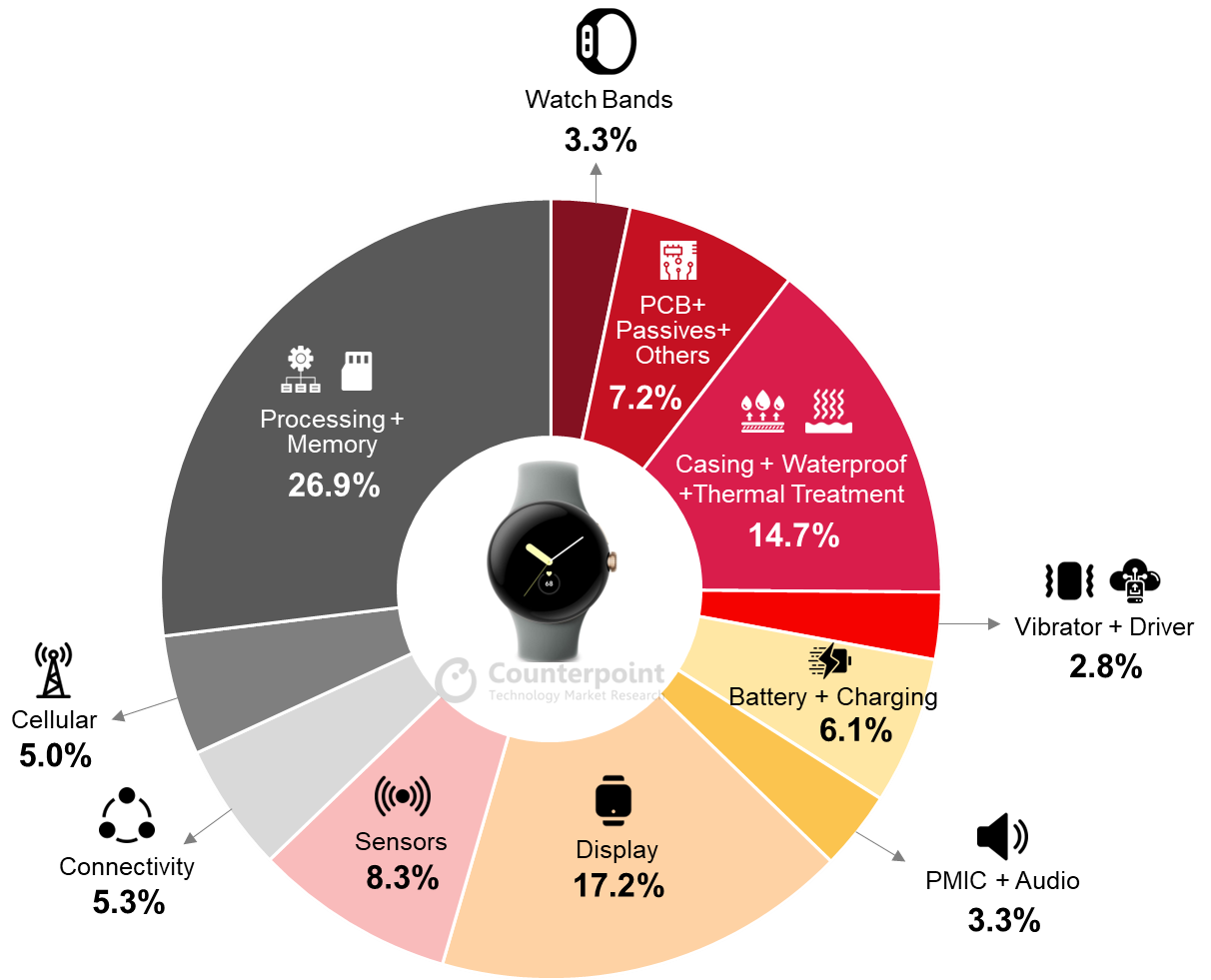The big picture: The Pixel Watch debuted late last year as one of the best looking wearables we've seen to date. Google priced the Wi-Fi variant of its smartwatch at $349 - that's $100 more than the comparable Apple Watch SE - and $399.99 for the LTE model. The price point is even tougher to swallow in light of a recent bill of materials (BoM) report from Counterpoint Research.
According to the firm's analysis, the BoM on the LTE-capable Google Pixel Watch is estimated at $123. The wearable's processing system and memory, which includes a Samsung Exynos 9110 SoC, an NXP MIMXRT595S co-processor, 32GB of memory and 2GB of RAM, account for nearly 27 percent of its total cost.
The 1.2-inch, always-on OLED panel and its subsystem are the second most expensive component category, accounting for 17.2 percent of the watch's total BoM. The display sports a resolution of 450 x 450 (320 PPI) and can run at up to 1000 nits in bright environments. It is coated with Corning's 3D Gorilla Glass 5 for added protection.

Given the numbers, Google's profit margin on the Pixel Watch is a very healthy 69 percent. Of course, this doesn't include R&D cost, manufacturing, packaging, marketing, shipping and so on.
Let's get back to pricing. The Pixel Watch with LTE goes for $399.99, which is the same as the Apple Watch Series 8. The two may seem comparable at first glance but dig deeper and you'll soon realize that isn't the case. The Series 8 is powered by Apple's own S8, a dual-core 7nm chip clocked at 1.8GHz that first debuted in September 2020 while the Pixel Watch runs the Exynos 9110, a 10nm dual-core unit from Q3 2018 that runs at 1.15GHz.
The Exynos W920 would have been a far better solution to power the Pixel Watch as it is based on a 5nm process and utilizes Arm Cortex-A55 cores instead of older A53 units. It's the same chip Samsung used in the Galaxy Watch 5, a wearable that starts at $280.
Image credit: Triyansh Gill
